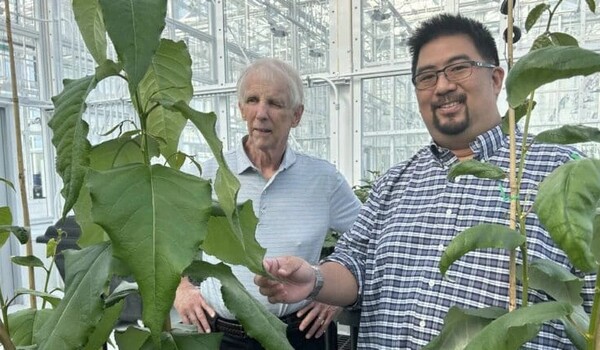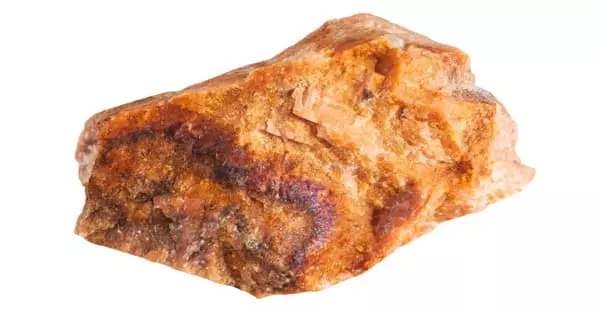Trees are the most abundant natural resource on Earth’s land masses, and scientists and engineers at North Carolina State University are working to develop sustainable, ecologically friendly alternatives to creating industrial chemicals from petroleum.
Lignin, a polymer that keeps trees stiff and resistant to breakdown, has proven difficult. Now, the NC State researchers understand why: They’ve uncovered a unique molecular feature of lignin, its methoxy concentration, that dictates how difficult or easy it is to use microbial fermentation to convert trees and other plants into industrial chemicals.
The results bring us one step closer to producing industrial chemicals from trees as an economically and environmentally viable alternative to petroleum-derived chemicals, according to Robert Kelly, the corresponding author of an article outlining the discovery published in the journal Science Advances.
Kelly’s lab previously demonstrated that certain extreme thermophilic bacteria, which thrive in settings such as Yellowstone National Park hot springs, may breakdown cellulose in trees — but “not to a great extent,” he added. “In other words, not at the level that would make economic and environmental sense for producing industrial chemicals.”
As Kelly explained, “It turns out that there’s more than just low lignin at play.”
We can harness the ability of certain thermophilic bacteria from hot springs in places like Yellowstone National Park to eat the plant matter and convert it to products of interest. However, these bacteria have varying appetites for different types of plants.
Kelly Bing
To get around the high lignin problem with trees, Kelly, the director of NC State’s Biotechnology Program and Alcoa Professor in the Department of Chemical and Biomolecular Engineering, has been working for over 10 years with Associate Professor Jack Wang, the head of the Forest Biotechnology Program in NC State’s College of Natural Resources. Wang is also a faculty member with the N.C. Plant Sciences Initiative.
Wang and colleagues employed CRISPR genome editing technology to make poplar trees with changed lignin concentration and composition, as described in the journal Science in 2023. They have concentrated on poplar trees because they grow quickly, require few pesticides, and thrive on marginal soils that are difficult to cultivate for food crops.
Kelly’s research discovered that some, but not all, of these CRISPR-edited trees were suitable for microbial breakdown and fermentation. According to his former Ph.D. student Ryan Bing, these bacteria have distinct appetites for various sorts of plants.
“We can harness the ability of certain thermophilic bacteria from hot springs in places like Yellowstone National Park to eat the plant matter and convert it to products of interest. However, these bacteria have varying appetites for different types of plants,” said Bing, who now works as senior metabolic engineer for Capra Biosciences in Sterling, Virginia.

“The question was why? What makes one plant better than the next?” he explained. “We found an answer to this by looking at how these bacteria eat plant matter of various compositions.”
In a follow-up investigation, Kelly and Bing investigated how successfully Anaerocellum bescii, a genetically designed bacteria initially isolated from hot springs in Kamchutka, Russia, broke down Wang’s altered poplar trees, which had significantly different lignin concentrations and composition. The researchers discovered that the lower the tree’s lignin methoxy level, the more degradable it is.
“This cleared up the mystery of why lower lignin alone is not the key — the devil was in the details,” according to Kelly. “Low methoxy content likely makes the cellulose more available to the bacteria.”
Wang had created the low-lignin poplars to be better for papermaking and other fiber products, but the recent research suggests that engineered poplars that have not just low lignin but also low methoxy content are best for making chemicals through microbial fermentation.
Wang’s engineered poplars grow well in the greenhouse, but results aren’t in yet from field testing. Kelly’s group has previously shown that low lignin poplar trees can be converted to industrial chemicals, such as acetone and hydrogen gas, with favorable economic outcomes as well as low environmental impact.
If these trees hold up in the field and “if we keep working on our end,” Kelly said, “we will have microbes that make large amounts of chemicals from poplar trees, now that we know the marker to look for — the methoxy content.”
This provides researchers, such as Wang, with a precise target for developing poplar lines that are most suited for chemical synthesis. Wang and colleagues have just begun field trials of advanced lignin-modified poplar trees to investigate this subject. Making chemicals from trees is currently possible utilizing traditional methods, such as splitting the wood into smaller pieces and treating it with chemicals and enzymes before further processing.
Kelly noted that using designed microorganisms to break down lignin has advantages such as fewer energy consumption and a lower environmental effect. Enzymes can be used to convert cellulose into simple sugars, but they must be added on a continuous basis. Certain microbes, on the other hand, are constantly producing essential enzymes that make the microbial process more efficient, he explained.
“They also can do a much better job than enzymes and chemicals,” Kelly added. “They not only break down the cellulose but also ferment it to products, such as ethanol — all in one step. The high temperatures that these bacteria grow at also avoid the need to work under sterile conditions, as you would need to do with less thermophilic microorganisms to avoid contamination,” he added. “This means that the process for turning trees into chemicals can operate like a conventional industrial process, making it more likely to be adopted.”
Daniel Sulis, another author on the Science Advances publication and a postdoctoral researcher in Wang’s group, stated that environmental disasters caused by climate change emphasize the urgent need for research into strategies to minimize reliance on fossil fuels.
“One promising solution lies in harnessing trees to meet society’s needs for chemicals, fuels and other bio-based products while safeguarding both the planet and human well-being,” Sulis told reporters. “These findings not only move the field forward but also lay the groundwork for further innovations in using trees for sustainable bio-based applications.”
















